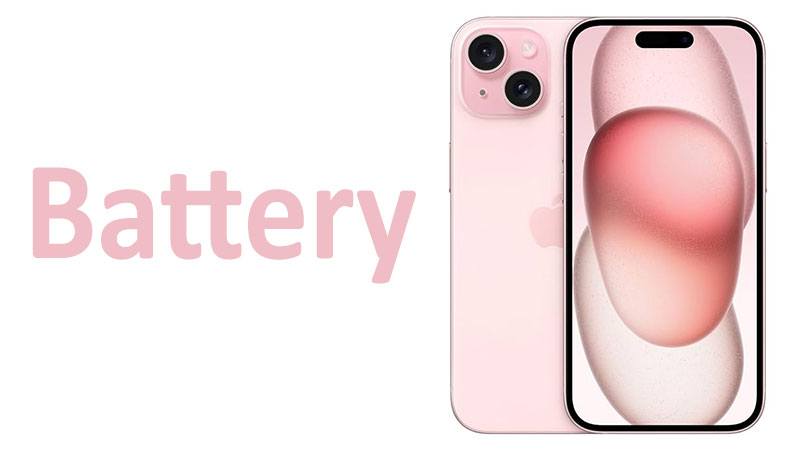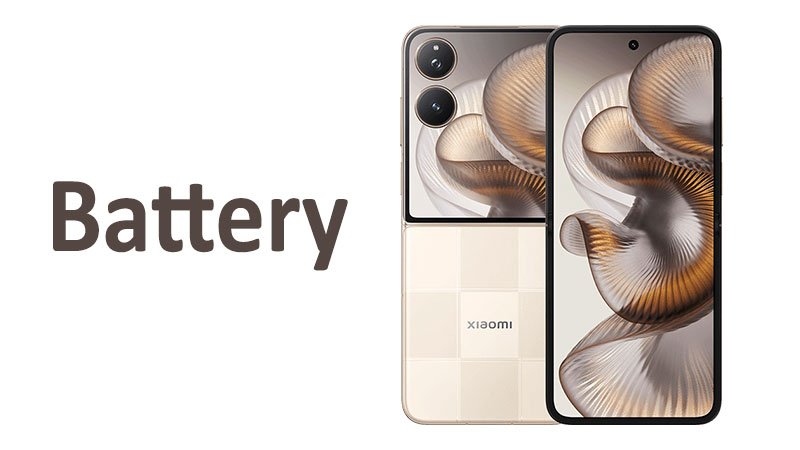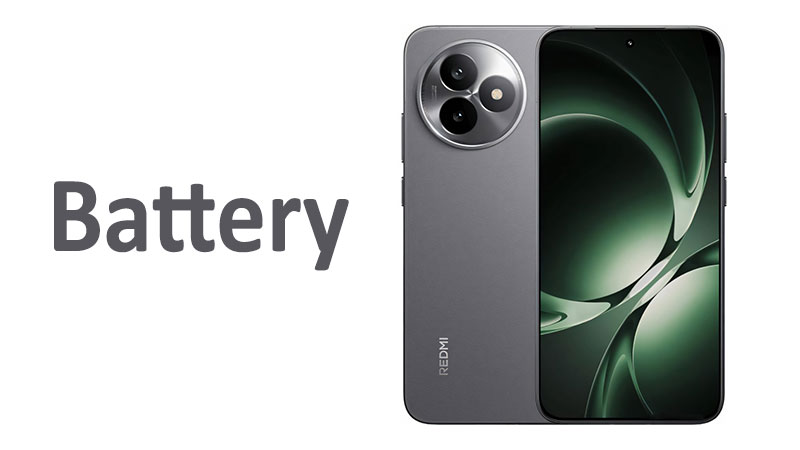The Apple iPhone 15 battery represents a crucial element of the user experience. Its performance directly affects daily smartphone use. Buyers prioritize excellent battery life in any new flagship device. They want to ensure their phone lasts through a busy day. This comprehensive article delves into every aspect of the iPhone 15 battery. We will explore its capacity, charging technologies, and real-world endurance. Understanding these details helps you make an informed purchase decision.
The Core Capacity and Design of the iPhone 15 Battery
Battery capacity is often the starting point for any discussion of endurance. The Apple iPhone 15 battery uses a specific lithium-ion cell technology. It provides power efficiently to the device. Apple often makes subtle capacity increases year over year. These changes contribute to better overall battery performance.
Battery Specifications Unpacked
The standard Apple iPhone 15 features a Li-Ion battery. Its specific capacity is 3349 mAh. This capacity is slightly higher than its predecessor, the iPhone 14. That model had a capacity of 3279 mAh. This 70 mAh difference seems small. However, it combines with other optimizations for improved performance. The overall battery system is sophisticated and integrated.
Lithium-ion batteries are the industry standard. They offer a great balance of energy density and weight. Apple continuously refines this chemistry. Their focus is on both longevity and safety. The physical design of the battery is tailored to the phone’s chassis. This ensures optimal space utilization inside the sleek device.
Capacity Comparison: iPhone 15 vs. iPhone 14
Comparing capacity is important for consumers. The iPhone 15’s 3349 mAh unit offers a modest size bump. This increase is notable because the physical dimensions of the phone remain similar. The extra capacity is due to internal space efficiency. It is also linked to thinner components like the display.
Apple’s real battery improvements often come from software. The new A16 Bionic chip manages power consumption better. This chip improves efficiency over the older A15 chip. The hardware and software work together seamlessly. This joint effort is what truly extends the iPhone 15 battery life. A larger battery size alone does not guarantee superior endurance. Efficiency plays an equally large role.
Wired and Wireless Charging Speeds
The way a phone recharges is just as important as how long it lasts. The Apple iPhone 15 supports multiple charging standards. It offers flexibility to users in various scenarios. This includes both wired and wireless charging capabilities. The shift to the USB-C port is a major change here.
Fast Wired Charging Performance
The iPhone 15 supports fast wired charging via Power Delivery 2.0 (PD2.0). Apple specifies a maximum charging speed. This allows the iPhone 15 to reach 50% capacity in approximately 30 minutes. This is a very important benchmark for users. It means you can quickly top up the battery before leaving home.
This fast charging requires a high-wattage USB-C power adapter. Apple recommends a 20W or higher power brick. This charger is sold separately. Consumers should know they need this specific accessory. Using a lower-wattage charger will increase the charging time. The phone carefully manages the power intake. This protects the battery health over time.
MagSafe and Qi2 Wireless Charging
The iPhone 15 features 15W wireless charging via MagSafe. MagSafe is Apple’s proprietary magnetic charging standard. It ensures perfect coil alignment every time. Proper alignment is key for maximum charging efficiency. MagSafe provides a reliable and convenient charging experience. It is a premium feature for many users.
The phone also supports the newer 15W Qi2 wireless standard. Qi2 is an open standard based on MagSafe technology. It also uses magnets for alignment. This is a significant move for industry compatibility. It requires the iOS 17.2 software update to function at the full 15W speed. Before this update, Qi2 chargers operate at lower speeds. This compatibility opens up many more accessory options for consumers.
Reverse Wired Charging
A minor but useful feature is 4.5W reverse wired charging. This allows the iPhone 15 to power other small devices. You can use a USB-C cable to charge AirPods or an Apple Watch. This is helpful in emergencies or when traveling light. It provides a small power bank function from the phone itself. However, it drains the main iPhone battery relatively quickly. Users should use this feature sparingly.
Real-World Battery Life and Endurance
Capacity numbers do not always translate directly to user experience. Real-world usage involves background tasks and variable screen brightness. The overall battery endurance is a combination of capacity and efficiency. The iPhone 15 performs very well in mixed-use scenarios.
Official Apple Endurance Ratings
Apple provides official battery life figures. These are based on specific tasks like video playback. The iPhone 15 offers up to 20 hours of video playback. It delivers up to 80 hours of audio playback. These are lab-tested figures. They are useful for comparison against other iPhone models. They set a baseline expectation for the user.
In practice, users generally see excellent all-day performance. This is true for typical usage patterns. Daily tasks include social media, web browsing, and messaging. The iPhone 15 manages these activities efficiently.
Factors Affecting Screen-On Time
Screen-on time is the best measure of real-world endurance. Several factors influence how long the screen stays lit. High screen brightness consumes the most power. Intensive tasks like 3D gaming are also significant power drains. Video editing places a large load on the processor.
The iPhone 15 uses a bright, high-quality display. Managing the brightness setting is essential for better battery life. Using Wi-Fi consumes less power than cellular data. This is especially true if the cellular signal is weak. Poor signal strength forces the phone to work harder. Users should be mindful of their cellular coverage.
Battery Health and Longevity
Apple uses battery health monitoring features. This feature tracks the maximum capacity of the battery. It reports it as a percentage of the original capacity. Lithium-ion batteries degrade over time. Their ability to hold a charge diminishes.
Apple designs the iPhone 15 to maintain 80% capacity for a set number of charge cycles. This is the industry standard for replacement consideration. Users can optimize battery longevity. They should avoid extreme temperatures. High heat is especially damaging to the battery chemistry. Charging slowly when possible also helps.
Specialized Comparisons and Context
Placing the iPhone 15 battery in context is crucial. We must compare it to its predecessor and its primary competitors. This comparison reveals where Apple made the most significant progress. It helps potential buyers understand the current market landscape.
Comparison with iPhone 14
The iPhone 15 battery life is noticeably better than the iPhone 14. This is due to two main factors. First, it has the small capacity bump (3349 mAh vs. 3279 mAh). Second, the A16 Bionic chip provides thermal and power efficiency gains. The A16 chip is highly advanced.
In real-world tests, the iPhone 15 often lasts an extra hour. This is under consistent, heavy use. This gain is significant for power users. It can make the difference between needing an afternoon top-up or not. The overall charging speed remains largely the same. Both models can achieve 50% charge in about 30 minutes. The shift to USB-C on the iPhone 15 is the primary change in charging convenience.
Comparison with Android Flagships
The iPhone 15 competes with large-battery Android phones. Many Android flagships feature 4,500 mAh to 5,000 mAh batteries. On paper, they appear to have superior endurance. However, Apple’s closed ecosystem provides significant optimization advantages. iOS manages background processes extremely efficiently.
The iPhone 15 often rivals larger-capacity Android phones in testing. This is purely due to iOS and hardware integration. Android phones frequently offer much faster wired charging speeds. Some competitors can charge from 0% to 100% in under an hour. This is a clear area where Apple lags behind the competition. The iPhone prioritizes battery longevity and safety over extreme speed.
The USB-C Charging Advantage
The adoption of the USB-C port is a massive advantage. It simplifies the charging setup for many users. Most modern laptops and tablets use USB-C. This means one cable can power all your devices. It reduces clutter for travelers. This is a convenience improvement. It is not an increase in charging speed itself. The USB-C standard allows the iPhone 15 to work with any compliant PD charger. This increases accessory accessibility worldwide.
Pros and Cons of the iPhone 15 Battery System
Every technical feature has trade-offs. The iPhone 15 battery system is a carefully balanced design. It focuses on reliability and user safety. It also delivers solid, all-day performance. Here is a balanced look at its advantages and disadvantages.
Pros
The iPhone 15 offers genuinely improved all-day battery performance. This is thanks to the highly efficient A16 Bionic chip. It provides excellent endurance for most users. Fast wired charging reaches 50% in 30 minutes. This is convenient for quick power boosts. The 15W MagSafe charging is reliable and convenient. The transition to USB-C simplifies charging cable management. Support for the new Qi2 standard is forward-looking. This increases future accessory compatibility. The battery health monitoring features help users maintain longevity.
Cons
The maximum wired charging speed is modest compared to competitors. Many rivals offer 60W or 100W charging. The necessary fast charger is an extra purchase. This adds to the overall cost of ownership. The 4.5W reverse wired charging is very slow. It is only suitable for small accessories. Users who frequently game heavily may still need a midday charge. The battery capacity is still smaller than most high-end Android alternatives.
Important Considerations for Buyers and Readers
Consumers need practical advice about their new phone. Understanding battery features can save frustration and prolong the phone’s life. Several key points stand out for the iPhone 15 battery system. These details affect daily usage and long-term investment.
Choosing the Right Charger
Buyers must purchase a 20W or higher power adapter for fast charging. This is essential to achieve the 50% charge in 30 minutes. Lower-wattage chargers will not damage the phone. They simply charge it slower. Always use certified cables and chargers. This ensures device safety and optimal performance.
Understanding the Qi2 Update
Remember that the 15W Qi2 wireless charging requires iOS 17.2. Users should update their phone immediately to access this speed. Qi2 chargers are becoming more common. They offer the same magnetic convenience as MagSafe. They typically cost less than certified MagSafe accessories. This offers a good balance of cost and performance.
Battery Optimization in iOS
iOS provides several tools to manage battery drain. Low Power Mode temporarily restricts background activity. It significantly extends the remaining charge. Users can also check the Battery section in Settings. This shows which apps consume the most power. You can then manage background refresh settings for specific apps. Actively managing these settings can make a difference. Turning off unnecessary notifications also helps conserve power.
Managing Temperature
Temperature control is a major factor in battery health. Avoid charging the iPhone 15 in hot environments. Do not leave the phone in direct sunlight. Excessive heat accelerates battery degradation. If the phone gets too hot during heavy gaming, stop and let it cool. The phone will automatically limit charging when too hot. This is a built-in safety feature.
Advanced Battery Health Features
Apple has invested heavily in software to manage battery health. These features are designed to extend the usable lifespan of the battery. They work silently in the background. They protect the user’s long-term investment.
Optimized Battery Charging
The iPhone 15 includes the Optimized Battery Charging feature. This learns the user’s daily charging routine. It only charges the battery past 80% just before the user needs it. For example, if you charge overnight, it holds the charge at 80% for several hours. It only completes the final 20% right before your alarm goes off. This reduces the time the battery spends at a full charge. Staying at 100% for long periods creates chemical stress. This optimized approach slows the rate of degradation.
Charging Limit Setting
Some users want even more control over battery health. The iPhone 15 offers a manual Charging Limit setting. Users can choose to limit the maximum charge to 80%. This prevents the battery from ever reaching 100%. Maintaining a charge between 20% and 80% is ideal for longevity. This feature is excellent for users who mostly charge overnight. They can accept the lower runtime for a longer battery lifespan.
Efficiency of the A16 Bionic Chip
The A16 Bionic chip is not just about speed. It is also an efficiency powerhouse. Its specialized cores handle background tasks with minimal power use. When the phone is idle, the A16 chip minimizes battery drain. This high efficiency is the main reason why the 15’s battery life outperforms its capacity. It works smarter, not just with more power. This is the hallmark of Apple’s engineering philosophy.
Conclusion: Making an Informed Choice
The Apple iPhone 15 battery system delivers a significant, user-focused upgrade. The 3349 mAh capacity provides a solid foundation. This, combined with the power-efficient A16 Bionic chip, results in excellent all-day endurance. For most consumers, the iPhone 15 offers reliable performance. It easily manages a typical day of calls, browsing, and media consumption.
The charging capabilities offer versatility. Fast wired charging is effective for quick top-ups. MagSafe and Qi2 provide convenient 15W wireless charging options. While its charging speed does not compete with the fastest Android rivals, Apple prioritizes battery health and longevity. The introduction of the USB-C port simplifies the user’s cable situation.
Buyers should be aware that the fast charger is a separate purchase. They should also update to iOS 17.2 for full 15W Qi2 wireless speeds. Ultimately, the iPhone 15 battery system is robust, efficient, and reliable. It is a compelling package. The focus on sustained performance makes it a smart long-term smartphone investment.
FAQ
Does the iPhone 15 come with a charging brick?
No, the iPhone 15 does not include a charging brick in the box. It only comes with a USB-C charging cable. Users must purchase a 20W power adapter separately for fast charging.
What is the maximum wired charging speed of the iPhone 15?
The iPhone 15 supports up to 27W wired charging, but it is typically advertised by Apple for efficiency. It can charge to 50% capacity in about 30 minutes using a 20W or higher power adapter.
What is the battery capacity of the standard iPhone 15?
The standard iPhone 15 has a battery capacity of 3349 mAh. This is a minor increase compared to the previous generation iPhone 14 model.
Can I use any Qi charger with the iPhone 15?
Yes, the iPhone 15 is compatible with standard Qi wireless chargers. However, only MagSafe or Qi2 chargers (with iOS 17.2) will deliver the maximum 15W wireless charging speed.
How do I check the battery health on my iPhone 15?
You can check the battery health percentage by going to Settings. Navigate to “Battery,” then select “Battery Health & Charging.” This screen shows the maximum capacity.



